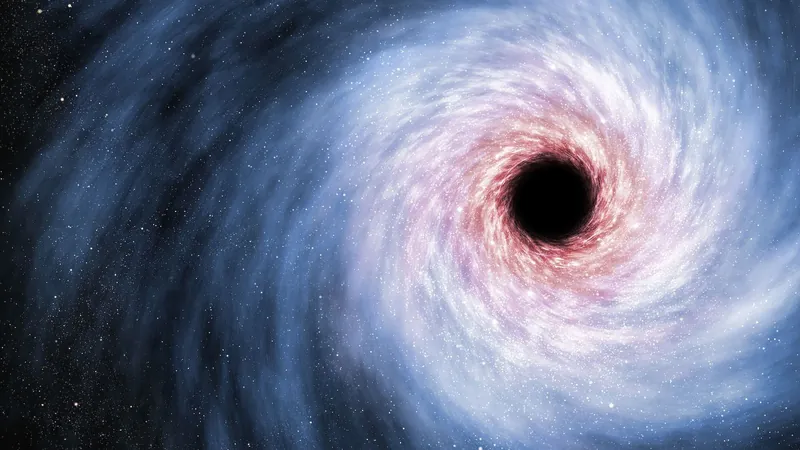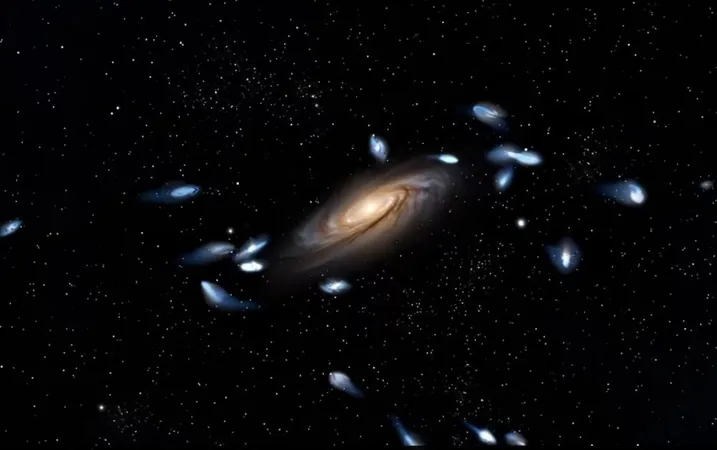
Unlocking the Mysteries of Black Holes: The Universe's Most Enigmatic Entities
2025-05-27
Author: Benjamin
What Lies Beyond the Event Horizon?
Black holes are the ultimate cosmic vacuum cleaners, where gravity is so intense that not even light can escape their grasp. But contrary to what their name suggests, these celestial giants are teeming with matter crammed into an incredibly small space. The theory of black holes surfaced in 1916, yet it was met with skepticism; scientists struggled to believe such entities could exist. Fast forward to today, and we've confirmed their presence throughout the cosmos, from distant galaxies to our very own Milky Way.
The Formation of Black Holes: A Cosmic Cataclysm
Black holes usually form when massive stars reach the end of their lifecycle and explode in a supernova. During their lifespan, stars generate heat and light through nuclear fusion, fusing lighter atoms into heavier ones. As they collapse and start creating iron, the process takes a turn—fusing iron requires more energy than it produces, leading to a cataclysmic collapse that forms a black hole. Also intriguing are supermassive black holes, which can be millions of times larger than our sun. They form over billions of years, steadily consuming surrounding materials and merging with other black holes. Some theorists speculate that primordial black holes may have emerged shortly after the Big Bang, but these elusive entities remain undiscovered.
What’s Inside a Black Hole? The Singularity Awaits
Inside a black hole lies the singularity—a point of infinite density where the laws of physics as we know them cease to function. Surrounding this singularity is the event horizon, an invisible boundary that, once crossed, spells doom for any matter or light. To escape, one would need to exceed the speed of light—a feat deemed impossible.
Peering Into the Darkness: How Do We Detect Black Holes?
Although black holes themselves are invisible, astronomers employ several methods to study them. One such method involves observing quasars—ultra-bright structures formed when black holes feast on gas and dust, creating a luminous glow. Some quasars can even outshine entire galaxies, allowing us to view them from billions of light-years away. Further, black holes can also be detected through gravitational waves generated during their collisions. These ripples in spacetime, though faint, have been captured by advanced instruments on Earth, confirming over 50 merger events.
The Historic Image: Revealing a Black Hole
In a groundbreaking achievement, astronomers captured the first-ever image of a black hole in 2019. Using the Event Horizon Telescope, they unveiled the glowing material swirling around a supermassive black hole named M87*, which weighs three billion times more than our sun and resides over 50 million light-years away. The image revealed a striking distortion—often likened to a glowing orange donut—providing a striking reminder of the hidden depths of our universe.
Origins: Who Discovered Black Holes?
The concept of black holes can be traced back to physicist Karl Schwarzschild, who stumbled upon them in 1916 while solving equations from Einstein's general theory of relativity. His work indicated that compressing mass within a specific radius could create a gravitational pull strong enough to trap light itself. Over time, physicist Subrahmanyan Chandrasekhar further clarified that black holes could exist under extreme conditions.
A Journey Into a Black Hole: What Would Happen?
Falling into a black hole translates to certain death. Approaching the event horizon, the gravitational forces would stretch your body into a thin strand of particles, a process aptly named "spaghettification." For smaller black holes, this would happen almost instantly, tearing you apart before you even realized it. Conversely, larger black holes would extend the experience. In this case, as you neared the speed of light, time would behave strangely, allowing you to witness a merging of past and future events—all while facing a gruesome fate within the grips of the black hole.
Curious to Learn More About Black Holes?
Dive deeper into the cosmos’s greatest mysteries and join the quest to unravel the secrets of black holes. Discover the latest findings and theories that push the boundaries of our understanding of the universe.









 Brasil (PT)
Brasil (PT)
 Canada (EN)
Canada (EN)
 Chile (ES)
Chile (ES)
 Česko (CS)
Česko (CS)
 대한민국 (KO)
대한민국 (KO)
 España (ES)
España (ES)
 France (FR)
France (FR)
 Hong Kong (EN)
Hong Kong (EN)
 Italia (IT)
Italia (IT)
 日本 (JA)
日本 (JA)
 Magyarország (HU)
Magyarország (HU)
 Norge (NO)
Norge (NO)
 Polska (PL)
Polska (PL)
 Schweiz (DE)
Schweiz (DE)
 Singapore (EN)
Singapore (EN)
 Sverige (SV)
Sverige (SV)
 Suomi (FI)
Suomi (FI)
 Türkiye (TR)
Türkiye (TR)
 الإمارات العربية المتحدة (AR)
الإمارات العربية المتحدة (AR)